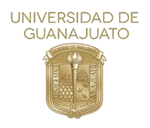
Guanajuato, Gto., October 21, 2019.- In the early morning of February 8, 1969, in the town of Allende, Chihuahua, fell what has become the most studied space object in history, which was called the Allende meteorite, whose origin refers to the formation of the solar system.
Upon entering the Earth's atmosphere, it exploded into thousands of pieces, of which about 2 tons were recovered. Currently the meteorite fragments are distributed all over the world, among study centers, laboratories and private collectors; Guanajuato University (UG) has a sample of this object, whose age is approximate to that of the Sun.
The meteorite crash happened as the scientific community was preparing for the takeoff of the Apollo 11 mission, which first brought humans to the moon. At the time, this find "was like Rosseta's stone of knowledge of the solar system," says Juan Esteban García Dobarganes Bueno, Director of the Department of Engineering in Mines, Metallurgy and Geology of the UG, who detailed that there are about 16,000 published scientific papers on this subject.
An important point of this meteorite, he stressed, is that it contains material such as amino acids, which are the basis of the chain of life.
The meteorite is classified as a carbonaceous chondrite and is composed of more than 100 minerals, many of which were elements unknown to scientists before this rock fell on Allende.
Professor García Dobarganes commented that given the great expectation generated in 1969, immediately after its fall, a team of experts from the National Aeronautics and Space Administration (NASA) moved to Chihuahua. ) and another of researchers from the National Autonomous University of Mexico (UNAM), among them Dr. Gerardo Sánchez Rubio, who was also a professor at the UG.
Regarding how a fragment of the ancient rock came to the UG, M. Elia Monica Morales Zárate, in charge of the Museum of Mineralogy "Eduardo Villaseñor Söhle", pointed out that there is little data about it, but it is known that it was a donation from the Smithsonian Museum, which holds the most fragments of the meteorite.
The academic emphasized that the Allende meteorite is the oldest rock in existence and having it "is like having the solar system in your hand."
Currently, this meteorite is exhibited at the Museum of Mineralogy, located in the San Matías headquarters of the UG, and will be exhibited temporarily in the Museum of the University of Guanajuato (MUG), whose opening is nearby.
Galería fotográfica





